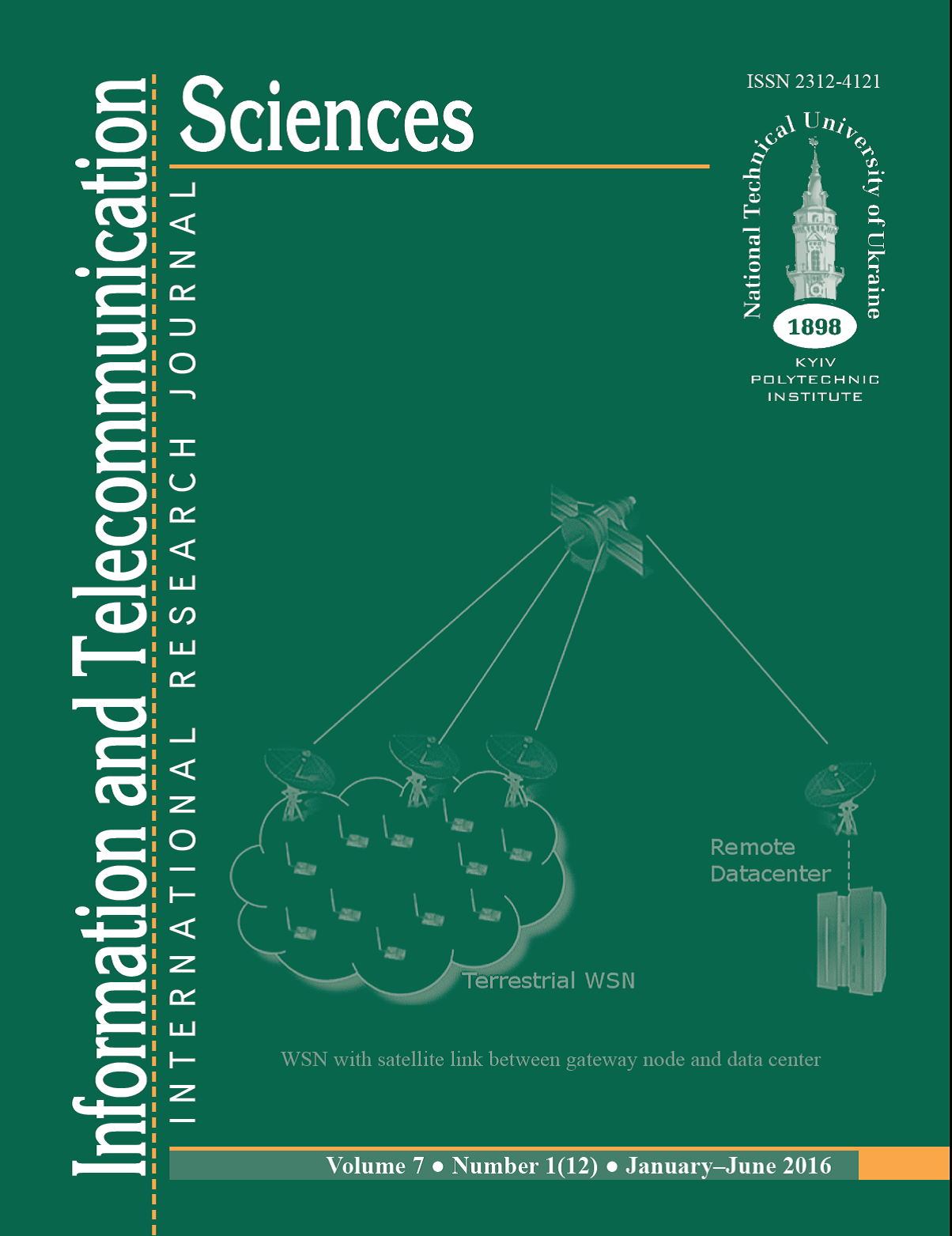FEATURES OF THE CLOUD SERVICES IMPLEMENTATION IN THE NATIONAL NETWORK SEGMENT OF UKRAINE
DOI:
https://doi.org/10.20535/2411-2976.12016.31-38Keywords:
cloud-system, cloud computing, virtual machine, cloud structure, government and public service systemAbstract
Background. Cloud computing environments and services on their basis offering unprecedented cost savings, improved exchange of information and the efficiency of the infrastructure. Accordingly, by using these solutions we can increase the efficiency of the national network services segment. Thus the scalable service architecture development of network systems is a key aspect which directly forms the preferred national electronic services, both public and private sectors.
Objective. The aim of the paper is to find the ways of optimal consolidation of cloud service systems for the timely transformation of single national information space Ukraine. According to the authors, providing an opportunity to influence these processes by government oversight agencies is critical to Ukraine
Methods. Relevance of research in this area is confirmed by the rapid development of commercial technologies that make cloud implementation process simpler, safer and much more productive on the criteria of transparency, integration, expansion (scalability), quality of service. The introduction of cloud services by public and private operators of distributed service platforms requires consolidation of needs for cloud service technologies, and the harmonization of tariffs for their use by public oversight bodies such as NCCIR of Ukraine. Obviously, the developers of cloud service solutions must have the tools available to maintain service availability and quality, based on the technical and target parameters.
Results. Proposed architectural features of the cloud services implementation technologies, including private cloud using existing structures to support the government and civil service systems at significantly reducing capital expenditures, provided support to the required level of security.
Conclusions. Creation of a common cloud service network information environment requires data-centered model (in the long term DaaS), which has trusted data processing center based core, provided with the decent level of
protection and functionality, spreading a corresponding policy on all joint data processing centers of national segment cloud network system by means of interoperability, which allows to deliver services demanded here and now, using
replication and migration of corresponding services and link data (including inter-operator and cross-platform).
References
Demydov I., Concept of the migrating firewall to scalable cloud networks / Ivan Demydov, Orest Lavriv, Zenoviy Kharkhalis, Mohamed Mehdi El Hatri // Мodern problems of radio engineering, telecommunications, and computer science Proceedings of the International Conference TCSET’2016 (Lviv-Slavske, Ukraine February 23 – 26, 2016) – Lviv: Publishing House of Lviv Polytechnic, - 2016, - Р.643-645.
https://en.wikipedia.org/wiki/Information_assurance
Strykhaliuk B. М. Structural and functional synthesis of heterogeneous service-oriented telecommunications networks: Abstract dissertation
for the degree of doctor of technical sciences 05.12.02 - Telecommunication systems and networks / Bogdan M. Strykhaliuk; Ministry of Education and Science of Ukraine, National University "Lviv Polytechnic". - Lviv, 2015. – 40 P.
Federal Cloud Computing Strategy, Feb 2011 // www.cio.gov/documents/Federal-Cloud- Computing-Strategy.pdf
DoD Cloud Computing Strategy // www.defense.gov/Releases/Release.aspx?ReleaseID =15435
NIST Special Publications: [SP 500-292] NIST Cloud Computing Reference Architecture, September 8, 2011
DoD Directive 4630.5 Interoperability of IT and NSS, May 5, 2004 // www.dtic.mil/whs/directives/ corres/pdf/463005p.pdf
Demydov I. V. The structural-functional synthesis of cloud service delivery platform after service availability and performance criteria / I. V. Demydov, B. M. Strykhalyuk, O. M. Shpur, Mohamed Mehdi El Hatri, Y. V. Klymash // Information processing system. — 2015. — № 1. —
P. 144-159.

